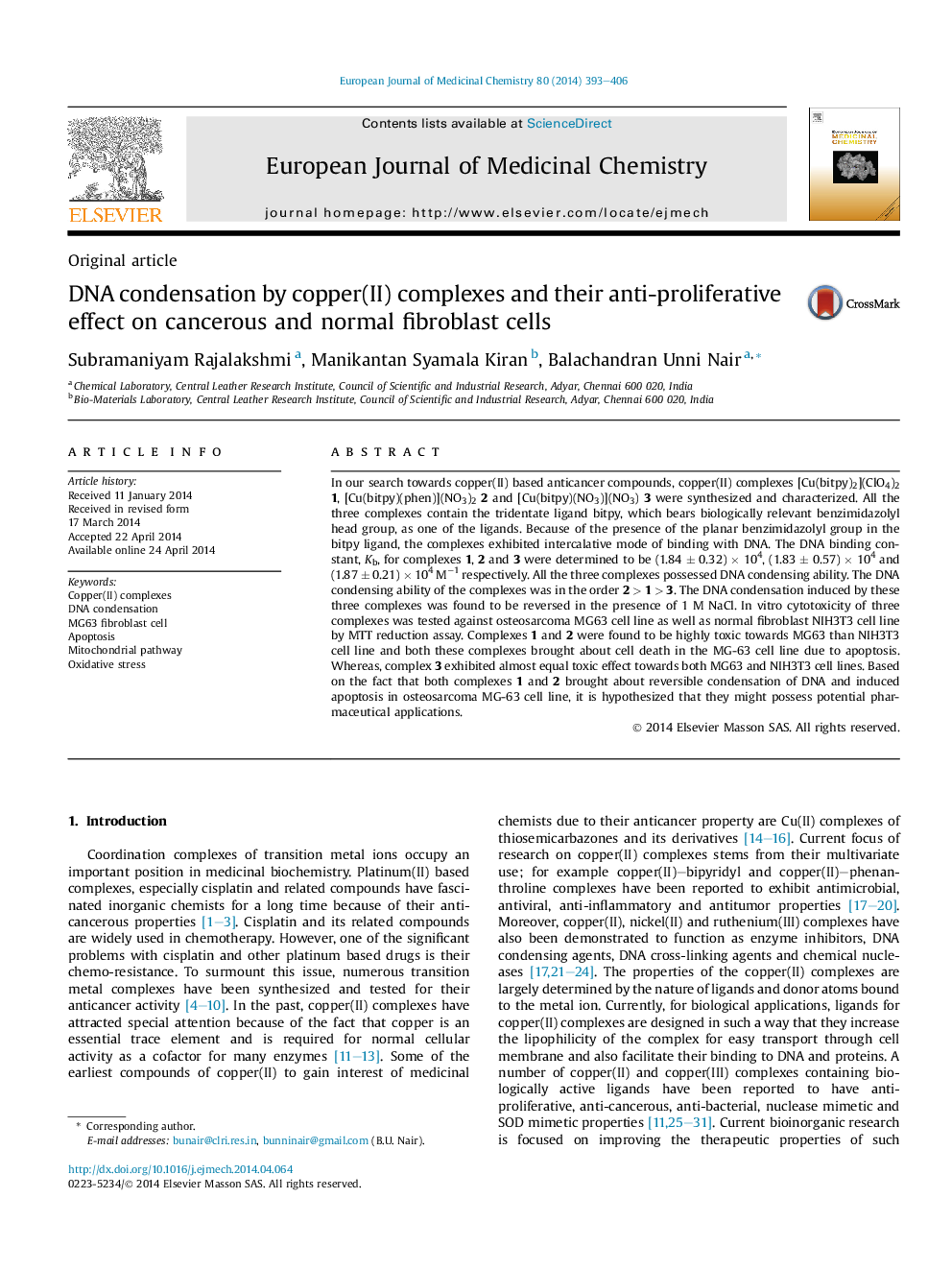| کد مقاله | کد نشریه | سال انتشار | مقاله انگلیسی | نسخه تمام متن |
|---|---|---|---|---|
| 1394117 | 1501136 | 2014 | 14 صفحه PDF | دانلود رایگان |

• Cu(II) complexes containing benzimidazolylterpyridine ligand has been synthesized.
• All the three complexes shown almost equal binding ability towards CT-DNA.
• DNA condensation ability of the complexes: 2 > 1 > 3.
• Complexes 1 and 2 are relatively more toxic to MG63 compared to NIH3T3 cells lines and shown to undergo cell death by apoptosis.
• 1 and 2 undergo cell death by apoptosis via. Mitochondrial mediated pathway.
In our search towards copper(II) based anticancer compounds, copper(II) complexes [Cu(bitpy)2](ClO4)21, [Cu(bitpy)(phen)](NO3)22 and [Cu(bitpy)(NO3)](NO3) 3 were synthesized and characterized. All the three complexes contain the tridentate ligand bitpy, which bears biologically relevant benzimidazolyl head group, as one of the ligands. Because of the presence of the planar benzimidazolyl group in the bitpy ligand, the complexes exhibited intercalative mode of binding with DNA. The DNA binding constant, Kb, for complexes 1, 2 and 3 were determined to be (1.84 ± 0.32) × 104, (1.83 ± 0.57) × 104 and (1.87 ± 0.21) × 104 M−1 respectively. All the three complexes possessed DNA condensing ability. The DNA condensing ability of the complexes was in the order 2 > 1 > 3. The DNA condensation induced by these three complexes was found to be reversed in the presence of 1 M NaCl. In vitro cytotoxicity of three complexes was tested against osteosarcoma MG63 cell line as well as normal fibroblast NIH3T3 cell line by MTT reduction assay. Complexes 1 and 2 were found to be highly toxic towards MG63 than NIH3T3 cell line and both these complexes brought about cell death in the MG-63 cell line due to apoptosis. Whereas, complex 3 exhibited almost equal toxic effect towards both MG63 and NIH3T3 cell lines. Based on the fact that both complexes 1 and 2 brought about reversible condensation of DNA and induced apoptosis in osteosarcoma MG-63 cell line, it is hypothesized that they might possess potential pharmaceutical applications.
Figure optionsDownload as PowerPoint slide
Journal: European Journal of Medicinal Chemistry - Volume 80, 10 June 2014, Pages 393–406